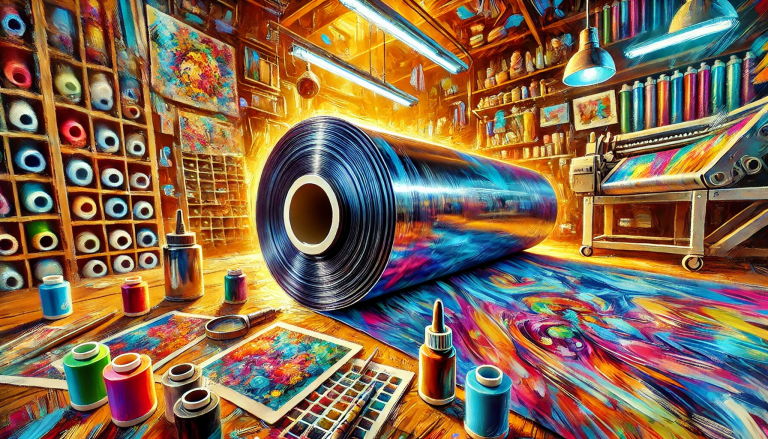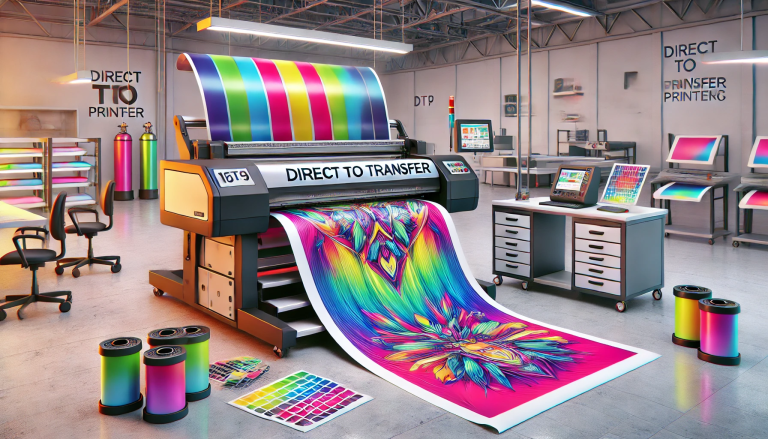The world of textile printing is witnessing a revolution, largely fueled by the advancements in Digital to Film (DTF) technology. Central to this transformation is the Polyethylene Terephthalate (PET) film, a material that has become indispensable in the realm of DTF printing. This article explores the burgeoning role of PET film in DTF technology, shedding light on its properties, benefits, and the promising future it heralds for the textile industry.
The Evolution of Textile Printing and the Advent of DTF Technology
Historically, textile printing has navigated through various phases, from traditional hand printing to the sophisticated digital methods we see today. The introduction of Digital to Film (DTF) technology marks a significant milestone, offering a seamless, efficient, and versatile approach to textile printing. DTF involves printing designs onto a special film, which is then transferred onto fabric through a heat press process. This method stands out for its ability to print on a wide range of fabrics, including those difficult to print on with direct-to-garment (DTG) techniques.
PET Film: The Backbone of DTF Printing
At the heart of DTF technology lies the PET film, a thin, flexible material chosen for its remarkable properties. PET film offers excellent dimensional stability, which ensures that the film does not distort during the printing or heat transfer process. Its surface is engineered to hold the printed ink with high fidelity, enabling vibrant, high-resolution images that are crucial for quality textile designs. Furthermore, PET film’s compatibility with various types of inks, including those based on water, solvent, and UV, makes it a versatile choice for different DTF printing needs.
Advantages of PET Film in DTF Printing
The integration of PET film into DTF printing brings a plethora of benefits to the textile industry. Firstly, it allows for the production of highly durable prints. The combination of PET film with a quality heat press process results in designs that can withstand multiple washes without fading or peeling. This durability is essential for clothing manufacturers and brands aiming for high-quality apparel.
Secondly, PET film enhances the aesthetic appeal of printed textiles. It enables the reproduction of vibrant colors and intricate details, making it possible to achieve complex designs that were previously challenging or impossible. This level of detail and color vibrancy opens up new creative avenues for designers, allowing them to push the boundaries of textile artistry.
Moreover, the use of PET film in DTF technology democratizes high-quality textile printing, making it accessible to small and medium-sized enterprises. The process is cost-effective, requires minimal setup, and can be done in-house, reducing the reliance on large textile printing factories. This accessibility fosters innovation and allows for more rapid prototyping and customization, catering to the growing demand for personalized and small-batch textile products.
The Environmental Perspective
As the textile industry grapples with its environmental impact, the role of PET film in sustainable printing practices comes into focus. Manufacturers are increasingly adopting recycled PET (rPET) films, which offer the same qualities as their virgin counterparts but with a significantly lower environmental footprint. This shift not only helps reduce waste and conserve resources but also aligns with the growing consumer demand for eco-friendly products.
Looking Ahead: PET Film and the Future of Textile Printing
The future of PET film in DTF technology is bright, with ongoing research and development aimed at enhancing its properties and sustainability. Innovations in film composition, recycling methods, and ink compatibility are expected to further elevate the quality, efficiency, and environmental friendliness of DTF printing.
In conclusion, PET film has emerged as a cornerstone of DTF technology, transforming the landscape of textile printing. Its remarkable properties, combined with the benefits it brings to the printing process, make it a key driver of innovation in the textile industry. As we look forward, the continued evolution of PET film and DTF technology holds the promise of more sustainable, versatile, and high-quality textile printing solutions, marking a new era in the fusion of technology and artistry in textile design.




